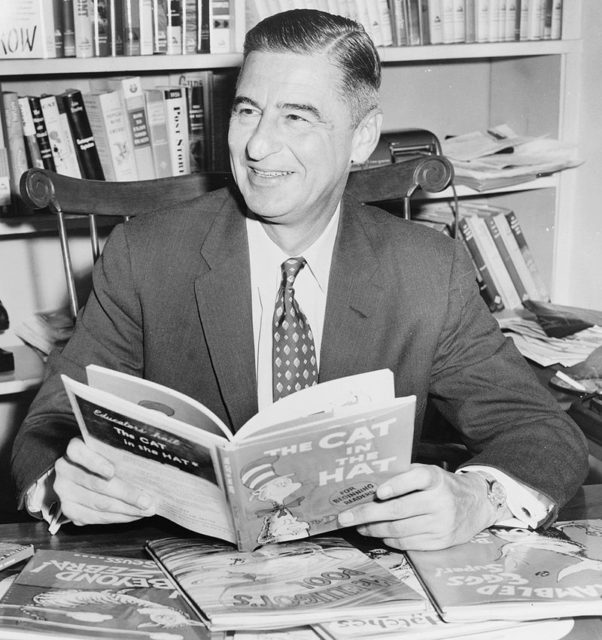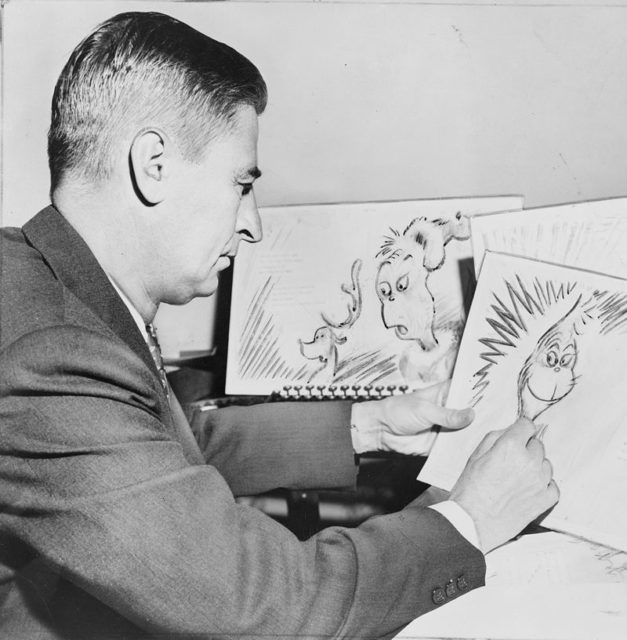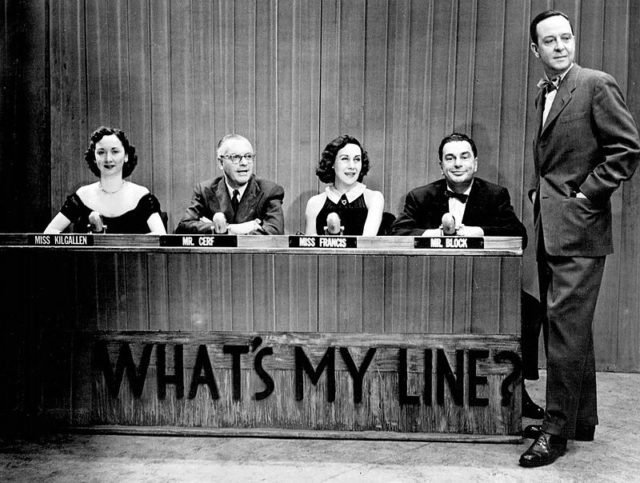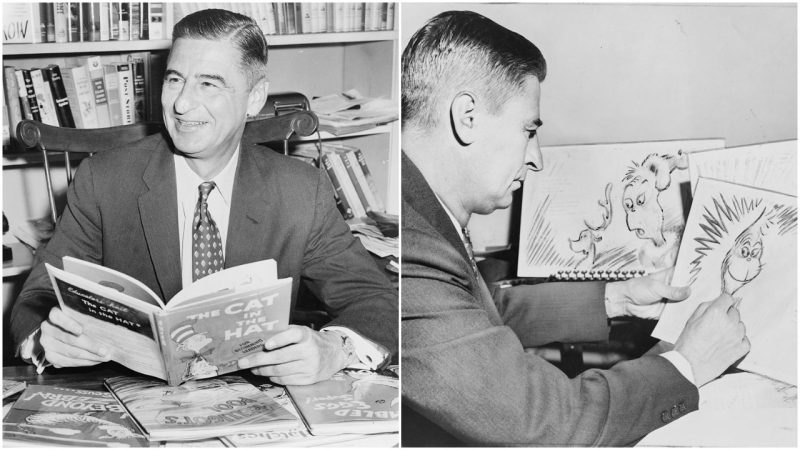Theodor Seuss Geisel, known by his pen name of Dr. Seuss, was a prolific writer and illustrator who wrote some of the most influential children’s books of all time, including The Cat in the Hat, How the Grinch Stole Christmas, and Fox in Socks.
During his career, Dr. Seuss wrote over 60 books, most of them achieving international acclaim, and many were adapted into television series, feature films, and even Broadway musicals.
The National Education Association concluded that the work of Dr. Seuss played such an important role in American education and in the development of a reading culture that they established March 3rd, Dr. Seuss’ birthday, as “National Read Across America Day.”
In 1925, Dr. Seuss enrolled in the renowned Lincoln College, Oxford, and intended to earn a Ph.D. in English literature. As soon as he started his studies at Oxford, he began sending his writings and drawings to magazines and publishing agents across the U.K. and the U.S. and soon achieved moderate success by drawing witty political caricatures.

In 1927, his first wife Helen Palmer managed to convince him to leave Oxford and pursue a drawing career. He and his wife moved back to the United States, where he got a job as a writer and illustrator at the satirical magazine Judge. Within a year of his return to the U.S., Dr. Seuss’ illustrations were featured in numerous popular magazines such as Life, Liberty, and Vanity Fair.
Before World War II, Dr. Seuss wrote five books of prose that were poorly received. However, he was already well-known as an illustrator and political satirist. During the war, he drew over 500 political comics and wrote several documentary propaganda films. One of these films, Our Job in Japan, became the basis of the acclaimed documentary Design for Death, which won the Academy Award for Documentary Feature in 1947.

Dr. Seuss rose to global literary fame in the years after World War II. His books charmed countless readers with their wacky characters, strange new words, creative wordplays, and unusual settings. The simplicity of Dr. Seuss’ writing style greatly contributed to their popularity. He tried to include as few unique words as possible in order to make his texts suitable for young children. In 1957, he and his wife co-founded the Beginner Books, a subsidiary of the Random House publishing company, which publishes books for readers aged three to nine.
The first book published by Beginner Books was Dr. Seuss’ acclaimed The Cat in the Hat. Although the book is 60 pages long, it contains only 236 words. In 1960, Bennett Cerf, the head of the Random House and Dr. Seuss’ main publisher, challenged Dr. Seuss to write a best-selling children’s book that would contain fewer than 100 unique words. Although Cerf argued that such an endeavor was impossible, Dr. Seuss accepted the challenge and decided to set the limit to only 50 unique words.

A few months after he accepted the challenge, Dr. Seuss wrote Green Eggs and Ham, a 62-page book that contains no more than 50 unique words. In the book, a character named “Sam-I-am” tries to convince an unnamed character to try a plate of delicious green eggs and ham. The book received international praise and immediately became a bestseller.
Related story from us: Dr. Seuss proposed to his wife on a motorbike, when she said yes, he crashed
Green Eggs and Ham currently holds the position of the fourth-best-selling English-language children’s hardcover book of all time, and, as of 2014, more than 8 million copies of the book have been sold. The works of Dr. Seuss have proven that the simplicity of vocabulary is extremely important for children’s books and that a combination of carefully chosen simple words and rhyme can produce an instant classic.
